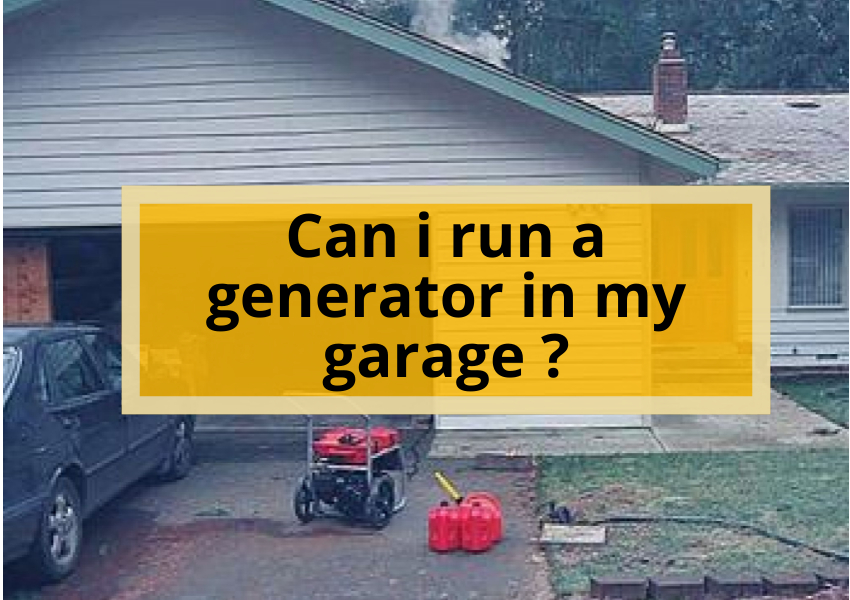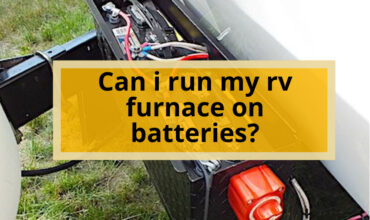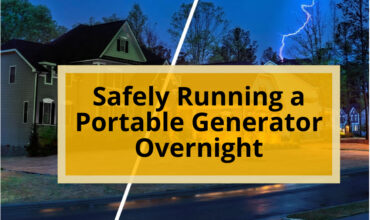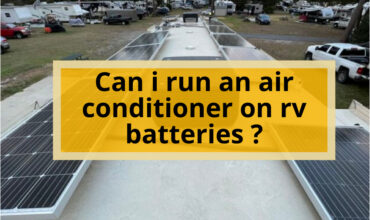Having backup power from a generator can provide crucial electricity during power outages. Many homeowners consider running a generator in their garage for easier access and to protect it from weather. However, important safety issues should be considered before running a generator in your garage.
This article will examine the key factors, including fire and carbon monoxide risks, required ventilation, recommended generator types and sizes, storing fuel safely, permits and regulations, and alternative options like gas lines and home standby generators. With proper precautions, planning, and setup, running a generator in your garage is possible for many homeowners. However, the hazards must be addressed upfront to ensure safety.
Fire Hazards of Running a Generator in the Garage
One of the biggest dangers of running a generator in your garage is fire. Generators pose a fire risk because they produce heat when converting fuel into electricity. Gasoline and diesel generators, in particular, can overheat and ignite nearby objects or fuel vapors.
Fire becomes an even greater risk if flammable items are stored too close to the generator. The oxygen-starved environment of the garage also increases the chances of carbon monoxide buildup and explosion.
To Mitigate the Fire Danger
- You should keep the generator at least 5-10 feet away from anything flammable, including the home itself, vehicles, fuel cans, Boxes, and lawn equipment.
- Maintain at least 3 feet of clear space on all sides for ventilation.
- Do not store any gasoline inside your home or garage.
- Only refuel the generator outdoors and let it cool before bringing it back inside.
- Having a fire extinguisher nearby is also wise.
- Choose a generator with protective housing to prevent accidental contact with hot components.
- Never leave a generator running unattended. Be prepared to shut it down immediately in an emergency.
Proper ventilation is critical to prevent deadly carbon monoxide poisoning.
CO fumes are odorless and invisible, quickly building to toxic levels in enclosed spaces. Open the garage door before starting and while running the generator to allow fresh air circulation. Install battery-operated CO alarms both inside the garage and living area. Consider running an exhaust extension cord to vent emissions outside. Routine maintenance and tune-ups keep the generator running efficiently to reduce CO output. For the same ventilation concerns, avoid using generators inside other connected spaces like crawlspaces or basements.
Choosing the Right Generator Type and Size for Garage Use
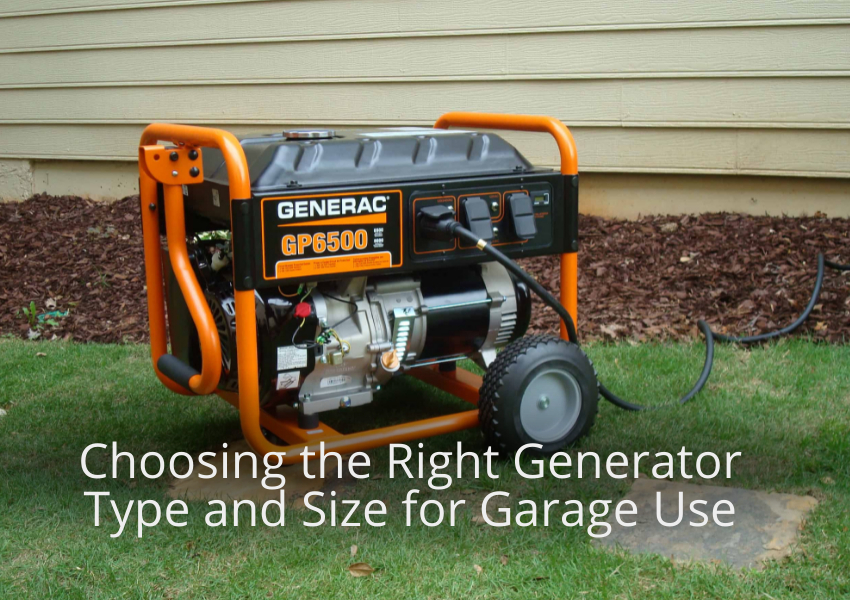
The type and size of generator you select for garage use will impact the safety and practicality. Here are some guidelines:
– Portable gas generators are convenient but emit more carbon monoxide and fire risk than other models. Only operate them intermittently for short-term outages. They should not run overnight indoors.
– Inverter generators run quieter, more efficiently, and emit less emissions. This makes them a better long-term garage option. Just ensure the noise level is tolerable.
– Standby home generators connect via gas lines or liquid propane to provide automatic backup power to your home’s electrical system. They typically cost more but provide whole-house coverage with less risk and maintenance.
– For wattage, choose a generator that provides at least 20% more than your expected maximum load. Undersizing the unit risks power overload and damage to electronics. Overbuying adds unnecessary expense. Inventory what you want to run during an outage to determine the appropriate wattage.
– For garage shop tools, pay special attention to start-up wattage ratings, which are higher than running watts. Allow for motorized tools to start simultaneously on your circuit.
– Running multiple high-wattage appliances like stoves or heaters from a small generator is not practical or safe. Prioritize essentials like fridges, freezers, lights, phone chargers, and fans.
– If wiring the garage for generator-supplied power, consult an electrician about installation requirements. Proper transfer switches are needed to avoid back-feeding your main electrical panel.
Storing Fuel Safely for Garage Generators
Since most gasoline and diesel portable generators require manual refueling, storing fuel in or near your garage raises the safety stakes even further. Here are some key tips for safe generator fuel storage:
– Store fuel only in properly labeled OSHA-approved containers designed for flammable liquids. Never use glass containers. Place it away from any heat sources, sparks, open flames, electrical circuits, or the generator itself.
– Keep only what you expect to use within 30 days. Old gas deteriorates quickly and becomes more volatile. Avoid storing more than 5-10 gallons total.
– Do not store fuel cans inside the garage or home. Keep them in a detached outdoor shed or on a concrete driveway away from buildings. Fuel vapors can migrate indoors and ignite.
– Maintain a clearance of at least 50 feet between the portable fuel storage and your garage or home. The vapors are combustible anywhere within this radius.
– Place fuel containers on a flat, impervious surface. Avoid any dirt, grass, or porous materials that might soak up spilled gas. Use secondary containment like a kiddie pool in case of leaks.
– Never siphon gasoline with your mouth. Use a hand pump or siphon designed for fuel transfer.
– Keep fire extinguishers both in the garage and near the fuel storage area. Inspect them regularly to ensure they remain charged and functional.
– Do not pour or spray gasoline anywhere indoors or near ignition sources. Its vapors are heavier than air and spread along floors.
– Check for any local laws about maximum quantities of stored flammable liquids permitted on residential property without a special license or permit.
Also read: Can Generators Power an Air Conditioner?
Safety Precautions When Running a Generator in the Garage
If operating a portable gasoline or diesel generator in your garage, take the following additional precautions:
– Verify it can run safely in an enclosed space before purchase. Most manufacturers provide guidance on indoor operation.
– Position it close to the garage door opening where exhaust can vent directly outside. Face the end with the muffler and tailpipe away from the door.
– Run an exhaust extension cord so emissions exit away from the building if needed. Avoid any bends that could back up exhaust.
– Open the garage door fully before starting the generator. Do not start or run it with the door closed. The open-door position must be maintained.
– Turn the generator on outside the garage first, then wheel it carefully inside once it is running smoothly.
– Supervise generator operation at all times. Turn off immediately if you smell gas or exhaust accumulation.
– Do not simultaneously operate any co-located equipment that burns gas, propane, or other fuels like space heaters, charcoal grills, or camp stoves.
– Ensure appliances are plugged directly into the generator itself and not daisy-chained together to prevent overloading circuits.
– Keep a fire extinguisher nearby and know how to use it properly. Maintain working CO alarms in the garage and home.
– Refuel only outdoors after the unit cools down completely. Never add fuel indoors or while operating. Don’t overfill the tank.
– Avoid running any corded equipment like pressure washers or pumps outdoors from an interior generator due to moisture risks.
Also read: The Safety of Standby Generators
Alternative Options to Running a Generator in Your Garage
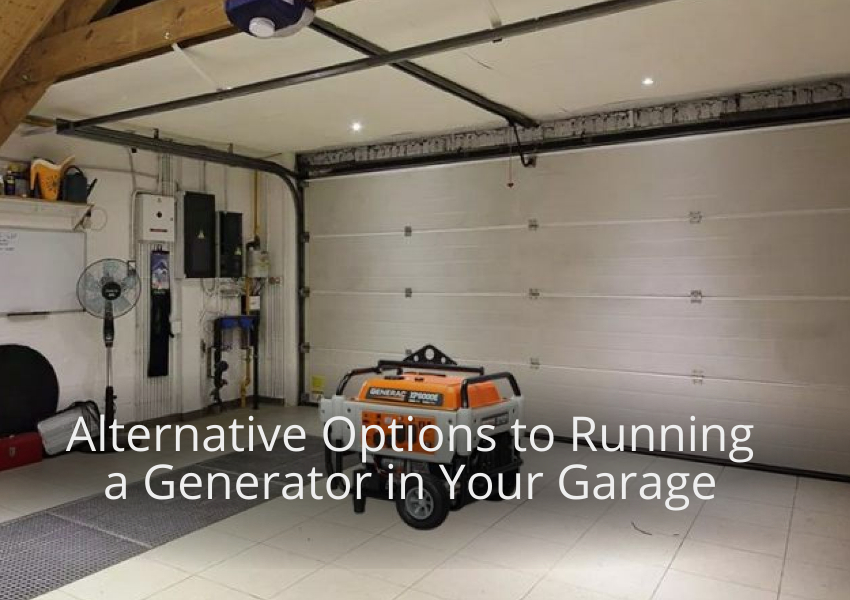
If the hazards and restrictions of garage generator operation seem daunting, safer alternatives exist:
– Install a permanent home standby generator instead, usually running on natural gas or propane. They power your whole home automatically when the main power goes out. Though expensive initially, they allow safer, unattended operations with fewer emissions. An electrician can wire the system to your home’s main electrical panel.
– Connect a natural gas line to your garage for running natural gas-powered generators or appliances instead of gasoline-powered equipment. This avoids storing flammable fuel. Ensure proper ventilation and CO alarms.
– Use an inverter generator or solar panels/batteries instead of a gas generator for small portable power needs. Both provide safer and cleaner power options.
– Evaluate whether certain appliances like freezers or medical devices could be powered short-term with a small battery pack or power station instead. These contain no fuel and generate no emissions.
– Upgrade your garage wiring to include a dedicated outlet fed from your household panel via a transfer switch. This is solely for generator power. It prevents backfeeding hazards when a generator runs while the main power is still on.
– Extend a smaller portable generator’s power cords to reach just outside the garage instead of needing to run the unit indoors. Maintain exhaust ventilation.
– Rent a large standby generator for planned construction projects needing temporary high electrical loads in the garage. Operate it safely outdoors.
– Consider adding a whole house backup battery system like a Tesla Powerwall if you want automatic backup power with minimal safety risks. They offer clean energy storage for short outages.
FAQ’s
What are the main risks of running a generator in my garage?
The major risks are carbon monoxide poisoning, fire hazards from fuel vapors or overheating, and potential electrical backfeeding if not properly installed.
What is the safest type of generator to use in a garage?
Inverter generators are safer for indoor garage use as they produce lower carbon monoxide emissions and are less likely to overheat.
How can I safely refuel my garage generator?
Refuel only outdoors once the unit has cooled down completely. Use proper fuel storage cans placed at least 50 feet from buildings and other ignition sources. Never store fuel indoors.
Do I need a permit to run a generator in my garage?
Check local municipal codes, as some areas prohibit or restrict running portable generators in residential garages and may require permits or inspections.
Can I connect a generator directly to my home’s wiring?
Only if done properly with a transfer switch installed by a licensed electrician to prevent hazardous back-feeding of electricity onto utility lines.
What are the symptoms of carbon monoxide poisoning?
Symptoms of carbon monoxide poisoning can include headache, nausea, dizziness, vomiting, chest pain, and shortness of breath. If you experience any of these symptoms while a generator runs, immediately get fresh air and seek medical attention.
Conclusion
Running a generator in your garage provides convenient access and protection from the elements. But fire, explosion, and deadly carbon monoxide hazards need careful planning and precautions to address.
Critical steps include installing proper ventilation and alarms, following all fuel storage and handling guidelines, choosing an appropriate generator size and type, supervising the operation, restricting usage of other fuel-powered tools, and maintaining fire prevention and response readiness.
For many homeowners, the easiest and safest approach is powering limited essentials with smaller portable inverter generators running just outside the garage. Permanent natural gas or propane whole home generators offer the greatest power and convenience but with a higher upfront cost.
With proper preparation and awareness, generators can provide vital backup electricity during outages. But caution is required any time gasoline-powered equipment operates indoors. Always prioritize safety over convenience when evaluating garage generator usage.
